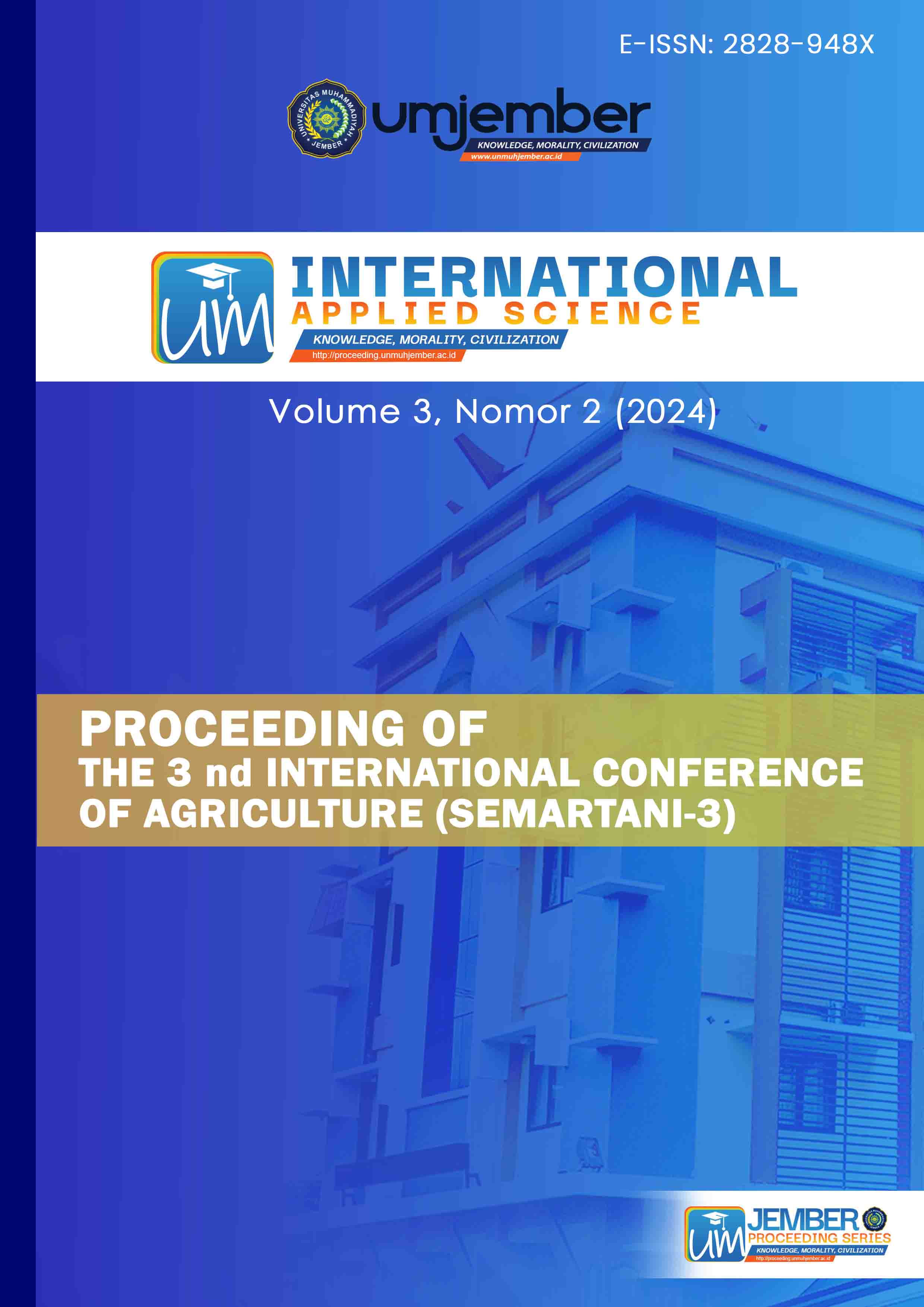Impact Of Fertilizer Subsidy Policy On Fertilizer Use In Su-korambi Sub-District, Jember
DOI:
https://doi.org/10.32528/ias.v3i2.643Keywords:
fertilizer subsidy policy, healthy rice, impact of fertilizer subsidyAbstract
Fertilizer subsidy is one of the government's efforts so that farmers can access fertilizer needs for their farms at more affordable prices, so that it is expected to encourage increased agricultural production in order to achieve food security. Healthy rice crop is a process in rice cultivation that prioritizes the use of natural ingredients that are environmentally friendly in the sense that they remain effective but still maintain productivity, production and quality of agricultural products. This study aims to determine the comparison of whether the reduction of subsidized fertilizer policy will affect the use of fertilizers in Sukorambi Jember District. Sampling using quota sampling method as many as 40 samples, consisting of 20 farmer group members who apply healthy agriculture and 20 farmer group members who apply conventional agriculture. The results showed that the comparison of the use of organic fertilizer before and after the change in fertilizer subsidy policy increased. The use of urea and NPK fertilizers in healthy rice decreased, but the use of KCL and ZA fertilizers remained. While the use of urea, NPK, and KCL fertilizers on conventional rice increased, but the use of ZA fertilizer remained.
Downloads
References
Fang, P., Abler, D., Lin, G., Sher, A., & Quan, Q. (2021). Substituting Organic Fertilizer for Chemical Fertilizer: Evidence from Apple Growers in China. Land, 10(8), 858
Kaya, Elizabeth, et al. "Effect of biofertilizers and NPK fertilizers to improve the growth of tomato (Solanum lycopersicum) plants grown in Fusarium oxysporum infected soil." Agrologia 9.2 (2020): 360216.
Katarina Hildegardi Estriana Nino, Yosefina Marice Fallo, Werenfridus Taena, & Boanerges Putra Sipayung. (2022). Preferences for the Use of Subsidized Fertilizers by Rice Paddy Farmers in Biboki Moenleu Subdistrict, North Central Timor District. Proceedings of the National Seminar on Agricultural Vocational Development and Education, 3(1), 220-236. https://doi.org/10.47687/snppvp.v3i1.308
Liu, J., Shu, A., Song, W., Shi, W., Li, M., Zhang, W., Li, Z., Liu, G., Yuan, F., Zhang, S., Liu, Z., & Gao, Z. (2021). Long-term organic fertilizer substitution increases rice yield by improving soil properties and regulating soil bacteria. Geoderma, 404, 115287. https://doi.org/https://doi.org/10.1016/j.geoderma.2021.115287
Liu, Z., Wang, S., Xue, B., Li, R., Geng, Y., Yang, T., Li, Y., Dong, H., Luo, Z., Tao, W., Gu, J., & Wang, Y. (2021). Emergy-based indicators of the environmental impacts and driving forces of non-point source pollution from crop production in China. Ecological Indicators, 121, 107023. https://doi.org/https://doi.org/10.1016/j.ecolind.2020.107023
Nuranggraeni, Meita, Oto Prasadi, and Nurlinda Ayu Triwuri. "UTILIZATION OF VARIOUS TYPES OF FERTILIZERS FOR RICE PLANTS ON FARMS IN CILACAP." Proceedings of the Na-tional Seminar on Applied Innovative Research (SENTRINOV). Vol. 7. No. 1. 2021.
Ratna, M. P. (2019). Organic Farming Starts with the Soil: Healthy Plants Come from Healthy Soil. KKN Diponegoro University, 1-3.
Rohman, A., & Maharani, A. D. (2018). Projection of Rice Food Consumption Needs in the Special Region of Yogyakarta. Caraka Tani: Journal of Sustainable Agriculture, 32(1), 29. https://doi.org/10.20961/carakatani.v32i1.12144
Tounkara, A., Clermont-Dauphin, C., Affholder, F., Ndiaye, S., Masse, D., & Cournac, L. (2020). Inorganic fertilizer use efficiency of millet crop increased by organic fertilizer application in rainfed agriculture on smallholdings in central Senegal. Agriculture, Ecosystems & Environ-ment, 294, 106878. https://doi.org/https://doi.org/10.1016/j.agee.2020.106878.
Downloads
Published
How to Cite
Issue
Section
License

This work is licensed under a Creative Commons Attribution-NonCommercial 4.0 International License.


